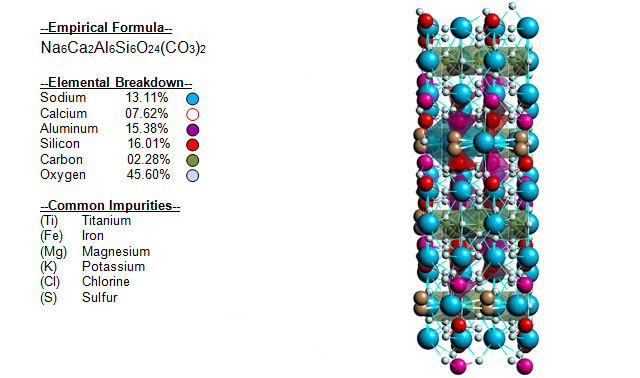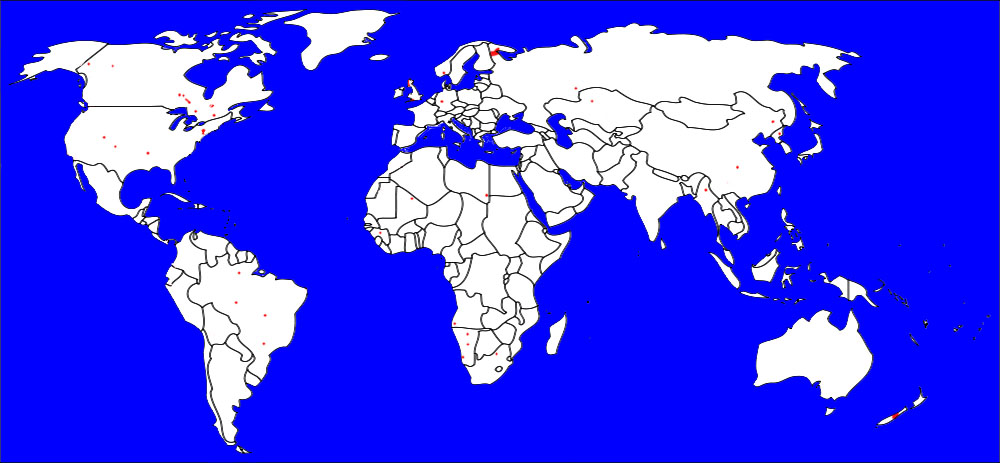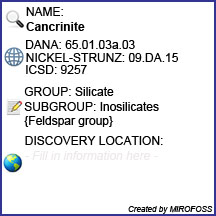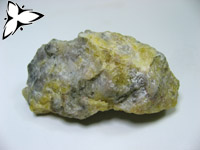![]()
Cancrinite is one of the more rarer silicate minerals. Cancrinite was originally first discovered in 1839 in the Ural Mountains in Russia, it is named after Georg von Cancrin, a Russian minister of finance. Famous localities are Alno, Sweden; Fen district, Norway; Iivaara, Finland; and Iron Hill, Colorado in the USA.
![]()
Within the metaphysical realm of minerals, Cancrinite facilitates meditation and creates a protective shield of golden light and connection with the earth, and is therefore useful in astral travel.
Please note that MIROFOSS does not suggest in any way that minerals should be used in place of proper medical and psychological care. This information is provided here as a reference only.
![]() Cancrinite is generally used as a lapidary mineral.
Cancrinite is generally used as a lapidary mineral.
![]()
Cancrinite is found in metamorphic rocks and in contact zones between limestone and igneous intrusives.
![]()
Cancrinite is a complex carbonate and silicate of sodium, calcium and aluminium. It is classed as a member of the feldspathoid group of minerals; the alkali feldspars that are poor in silica. It is unusual among the silicate minerals in that it will effervesce with hydrochloric acid due to the associated carbonate ions.
![]()
| Cleavage | Perfect | |
| Colour(s) | Blue, Colourless, Grey green, Yellow, White | |
| Specific Gravity | 2.45 | |
| Diaphaneity | Translucent to Transparent | |
| Fracture | Conchoidal - Very brittle fracture producing small concoidal fragments | |
| Mohs Hardness | 6.0 | |
| Luminescence | Non-fluorescent | |
| Lustre | Vitreous | |
| Streak | White | |
| Habit(s) | Massive to Prismatic | |
| Radioactivity | Non-radioactive | |
| Magnetism | Non-magnetic |
![]()
No known health risks have been associated with cancrinite. However ingestion of cancrinite, as with other naturally occurring minerals, is not recommended.
![]()
The following image shows the Elemental breakdown of the mineral cancrinite along with the mineral crystal structure.

![]()
| Crystal System | Hexagonal | |
| Class | Pyramidal | |
| Axial Ratios | a : c = 1 : 0.40551 | |
| Twinning | Rarely prismatic crystals | |
| Optical Data Type | Uniaxial (+/-) | |
| Pleochroism (x) | Colourless | |
| Pleochroism (y) | Colourless | |
| Pleochroism (z) | None |  |
| RL Values | nω = 1.507 - 1.528 nε = 1.495 - 1.503 | |
| 2V | N/A | |
| Max Birefringence | δ = 0.012 - 0.025 (See colour chart at right) | |
| Surface Relief | Low | |
| Dispersion | N/A |
![]()
The mineral cancrinite can be translated into the following select languages:
| Arabic | Bulgarian | Chinese (Sim) | 钙霞石 | ||
| Croatian | Czech | Danish | |||
| Dutch | cancriniet | Esperanto | Estonian | ||
| Finnish | French | German | Cancrinit | ||
| Greek | κανκρινίτης | Hebrew | Hungarian | ||
| Italian | Japanese | カンクリナイト | Korean | 칸크리나읻 | |
| Latin | Lithuanian | Norwegian | |||
| Persian | Polish | Portuguese | cancrinita | ||
| Romanian | Russian | Канкринит | Slovak | ||
| Spanish | Cancrinita | Swedish | Tagalog | ||
| Turkish | kankrinit | Ukrainian | Канкрін | Vietnamese |
![]()
Cancrinite can be found in only a very limited number of places around the world. The map below shows major documented concentrations of cancrinite:

![]()
 |
The MIROFOSS database offers free printable geological identification tags for personal and non-profit use. These tags can be used to properly identify mineral samples in your collection. -Click here- to download a full size jpeg image for a cancrinite identification tag; which can be printed on paper or used with a plastic laser printer. |
 |
What's this? What can I do with it? |
![]()
| Chemical Composition | Deer, W.A., R.A. Howie, and J. Zussman (1963) Rock-forming minerals, vol. 4, framework silicates, 310-320. |
| Crystallography | Grundy, H.D. and I. Hassan (1982) The crystal structure of a carbonate-rich cancrinite. Canadian Mineralogist: 20: 239-251. |
| Optical Data | Dana, E.S. (1892) System of Mineralogy, 6th. Edition, New York: 427-428. |
| History | Canadian Mineralogist: 20: 239-251. |
| History | Anthony, J.W., Bideaux, R.A., Bladh, K.W., and Nichols, M.C. (1995) Handbook of Mineralogy, Volume II. Silica, Silicates. Mineral Data Publishing, Tucson, AZ, 904pp., 2 sub-volumes: 109. |
| Geographical Data | Mindat.org. Retrieved on 2012-08-10 |
| Physical Identification | Webmineral.com. Retrieved on 2012-08-10 |
| June 25, 2014 | The last time this page was updated |
| ©2017 MIROFOSS™ Foundation | |
 |
|







